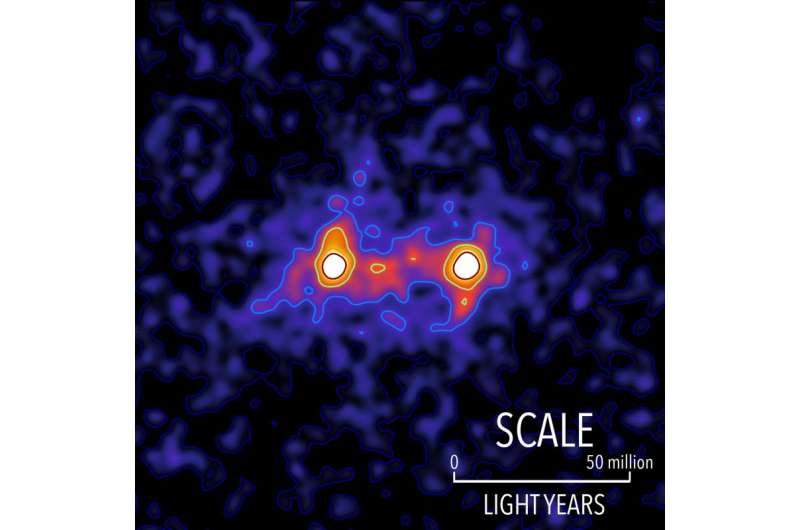April 17, 2017 report
Best of Last Week–First 'image' of dark matter web, why shoes come untied and a link between brain structure and anxiety

(ScienceX)—It was another good week for physics as an international team of researchers discovered strange forces acting on nanoparticles, which were related to looking at the Casimir Effect using quantum field theory. Also, a trio of physicists from LSU in the U.S. and Universidad de Valencia in Spain reported on their discovery of hidden aspects of electrodynamics, which they claimed advanced Maxwell's theory of electromagnetism. And a team at the University of Waterloo captured the first 'image' of a dark matter web that connects galaxies—a composite image depicting what the team believes is dark matter exerting a force between multiple galaxies, tying them together.
In news from space, a team with Southwest Research Institute discovered evidence for a habitable region within Saturn's moon Enceladus—its ocean floor. Also, representatives for the Event Horizon Telescope project reported that the group had conducted a joint venture to piece together the first image of a black hole—the team includes astronomers manning a large network of telescopes around the globe, each of whom aimed their sights on a chosen black hole for five nights in a row.
In other news, a team at MIT announced that they had developed a device that pulls water from dry air powered only by the sun—even at conditions with just 20 percent humidity. Also, a team at the University of Zurich found that brain stimulation could influence honest behavior—by applying a small jolt of electricity to the brain, the team found they could make volunteers play more honestly in a die-rolling experiment. And a team at UC Berkeley made headlines by developing a shoe-string theory explaining why shoelaces come untied. And a team at the Institute for Integrative Nanosciences in Germany tested sperm as a possible candidate for delivering cancer medications in female patients—by affixing little helmets onto their heads.
And finally, if you are someone who suffers from an increased sense of anxiety, you may want to read a report from a team at the University of Illinois. They found a link between brain structure, anxiety and negative bias in healthy adults—they discovered that volunteers with a relatively small inferior frontal cortex were more likely to suffer from anxiety.
© 2017 ScienceX





















